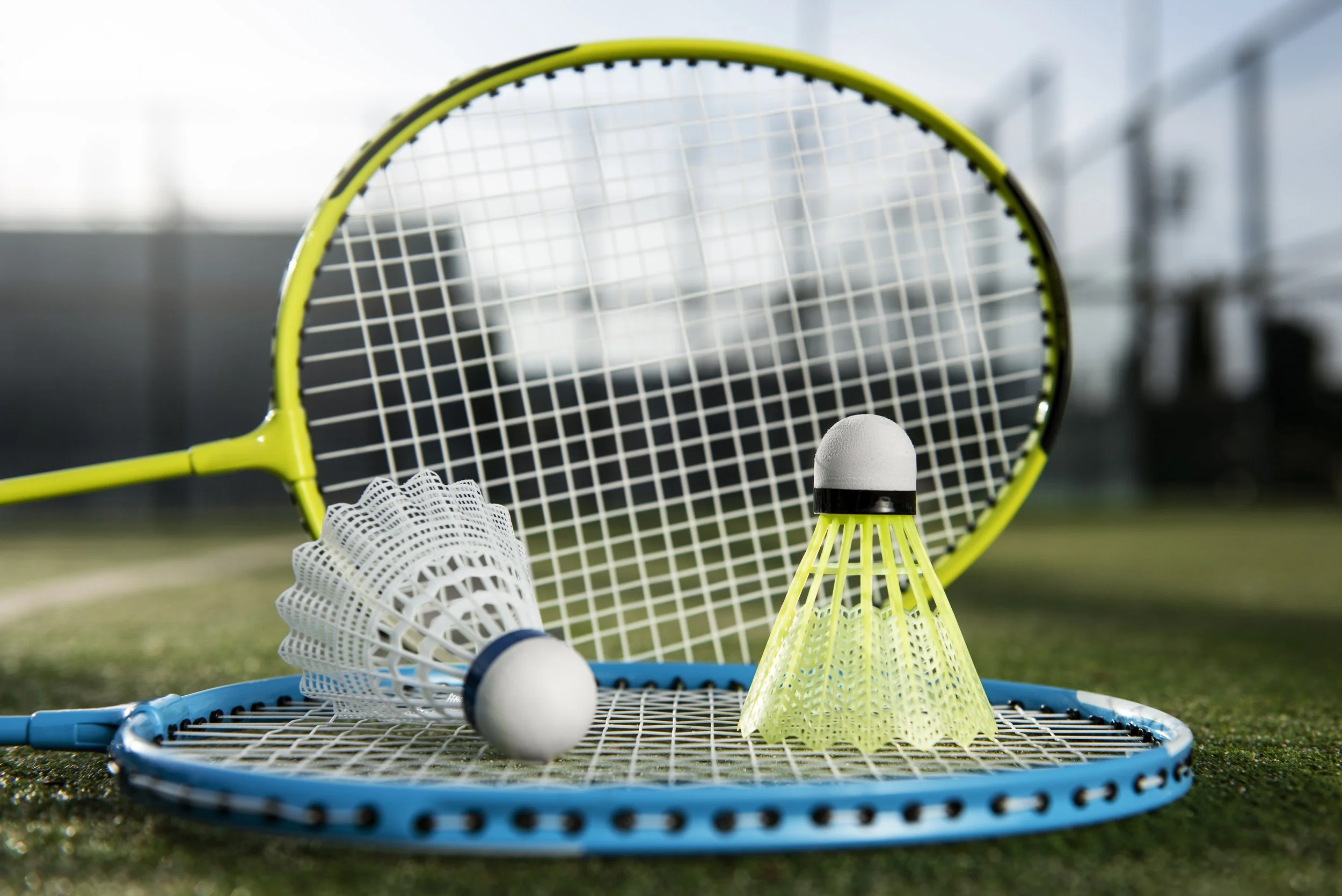Badminton Birdie: Everything You Need to Know

Whether you’re a casual player or a professional athlete, understanding the badminton birdie, also known as the shuttlecock, is crucial to mastering the game. This iconic projectile is not only central to gameplay but also a product of thoughtful design, history, and innovation. In this article, we’ll explore everything you need to know about badminton birdies, from their origin to their modern-day role in competitive and recreational badminton.
What is a Badminton Birdie?
A badminton birdie, or shuttlecock, is the object struck back and forth during a game of badminton. Unlike a regular ball, the birdie has a unique cone-like shape designed for aerodynamic stability. It consists of a rounded cork base and a skirt made of feathers or synthetic materials that form a cone.
The birdie’s structure allows it to fly differently than balls used in other sports—it decelerates rapidly after being hit, enabling more controlled and strategic play. This distinctive behavior makes badminton a highly tactical game that relies on reflex, precision, and technique.
Types of Badminton Birdies
There are primarily two types of badminton birdies, each serving different purposes depending on the level and context of play:
Feather Shuttlecocks
Feather shuttlecocks are made using 16 overlapping feathers, typically sourced from the left wing of a goose or duck, inserted into a cork base. These birdies are favored in professional and tournament settings due to their superior flight stability and responsiveness.
However, they are more delicate and prone to damage, especially during high-impact play. That’s why they’re usually reserved for advanced games and are stored with care to preserve quality.2. Nylon (Synthetic) Shuttlecocks
Designed for durability, synthetic or nylon shuttlecocks are commonly used in schools, recreational clubs, and casual play. They feature a plastic skirt and a rubber base, making them less prone to damage.
While they don’t offer the same level of flight precision as feather birdies, they are cost-effective and longer-lasting—ideal for beginners or extended use.
Materials Used in Making a Badminton Birdie
The performance and durability of a birdie largely depend on the materials used:
- Feathers: Typically sourced from goose or duck, with goose feathers being more premium. The quality of feathers affects flight, bounce, and drag.
- Cork Base: Made from natural cork or a combination of cork and synthetic materials. Natural cork offers better control.
- Nylon Skirt (for synthetic birdies): Crafted from high-durability polymers like nylon or polycarbonate to withstand repeated impacts.
- Glue & Thread: Used to bind the feathers or synthetic skirt to the base, ensuring aerodynamic uniformity and balance.
Manufacturers like Yonex, Victor, and Li-Ning invest heavily in research and testing to optimize birdie materials for various environmental and gameplay conditions.
How the Birdie Affects the Game
The badminton birdie directly influences the speed, trajectory, and strategy of the match. Its design makes it behave differently than a traditional sports ball:
- High Drag: The cone shape creates air resistance, causing the birdie to slow down rapidly after being hit.
Spin Sensitivity: Skilled players can add slice or spin for deceptive shots. - Flight Precision: Feather birdies fly more predictably and are favored for net play and smashes.
- Impact Feedback: The tactile feel of hitting a feather vs. nylon birdie can alter a player’s timing and technique.
Even wind conditions and humidity can affect how a birdie behaves, which is why matches are played indoors or in controlled environments.
Differences Between Feather and Synthetic Birdies
Here’s a quick comparison to illustrate the key differences:
| Feature | Feather Birdie | Synthetic Birdie |
| Material | Goose/Duck Feathers | Nylon/Plastic |
| Durability | Low | High |
| Cost | High | Low |
| Flight Accuracy | High | Moderate |
| Used In | Tournaments | Casual/Training |
| Feel | Natural | Slightly Rigid |
Understanding these differences helps players choose the right birdie for their skill level, budget, and playing environment.
Choosing the Right Birdie for Your Game
Selecting the correct shuttlecock is not just about cost—it’s about performance compatibility:
- Beginners: Opt for nylon shuttlecocks. They’re cost-effective and allow you to focus on your strokes and movement.
Intermediate Players: Look for hybrid birdies with better flight stability but more durability than full-feather models.
Professional/Tournament Players: Stick with feather shuttlecocks, preferably goose feather models approved by the Badminton World Federation (BWF).
Consider environmental factors too. For instance, in humid climates, synthetic birdies may hold up better. Likewise, in cooler conditions, feather birdies may become brittle faster.
Caring for and Storing Your Birdie
Proper care extends the lifespan of your birdies and ensures consistent performance:
- Keep Dry: Moisture can damage feather birdies. Store them in sealed tubes away from humidity.
- Humidify (For Feathers): Some players store birdies with a few drops of water or damp sponge to maintain feather flexibility.
- Avoid Pressure: Don’t stack or press heavy items on birdie tubes.
- Inspect Regularly: Replace damaged birdies promptly to prevent inconsistent shots or erratic behavior mid-game.
By taking care of your birdies, especially feather types, you can save money and maintain professional-grade performance longer.
Innovations in Birdie Technology
Modern shuttlecock design has evolved with technology. Brands are developing hybrid shuttlecocks that merge the benefits of feather and synthetic materials. These birdies offer better durability without compromising flight quality.
Technologies like aero-dynamic testing, 3D flight mapping, and robotic smashing machines are used by companies to simulate match conditions and refine birdie designs.
The BWF has also been working with manufacturers to develop eco-friendly shuttlecocks, reducing reliance on animal feathers while maintaining tournament-level quality.
Fun Facts About the Badminton Birdie
Here are some intriguing facts that every badminton enthusiast and trivia lover should know:
- The fastest badminton hit ever recorded was 493 km/h (306 mph) by Fu Haifeng using a feather shuttlecock.
- Each birdie must have exactly 16 feathers—no more, no less—for tournament legality.
- Feather birdies are always made using left-wing feathers only to ensure uniform spin and trajectory.
- On average, a professional player may use up to 10 feather birdies per match due to damage and wear.
The term “shuttlecock” comes from combining “shuttle” (to move back and forth) and “cock”, an old English word for a male bird.
Conclusion
The badminton birdie may seem like a simple object, but it plays a complex and pivotal role in the sport. From material composition to aerodynamic behavior, the birdie affects every rally, serve, and smash. Choosing the right type—feather or synthetic—can enhance your gameplay, whether you’re a beginner or a seasoned pro.
As innovation continues to shape its design and performance, the birdie remains a fascinating blend of science, craftsmanship, and sport. So next time you pick up a racket, give a little more appreciation to the shuttlecock—it’s the unsung hero of every badminton game.


